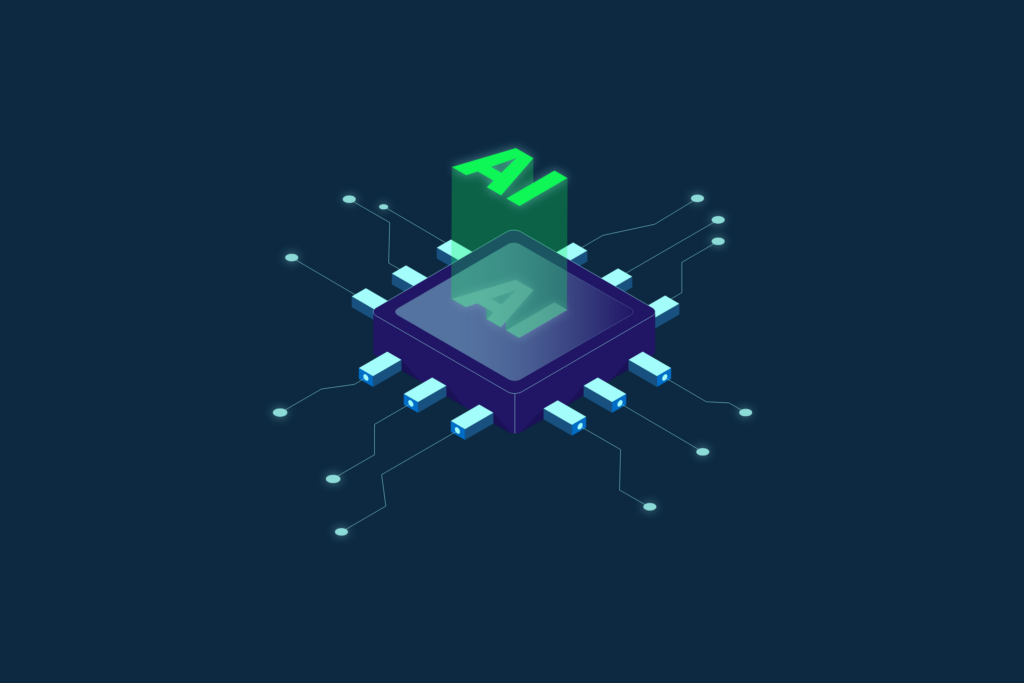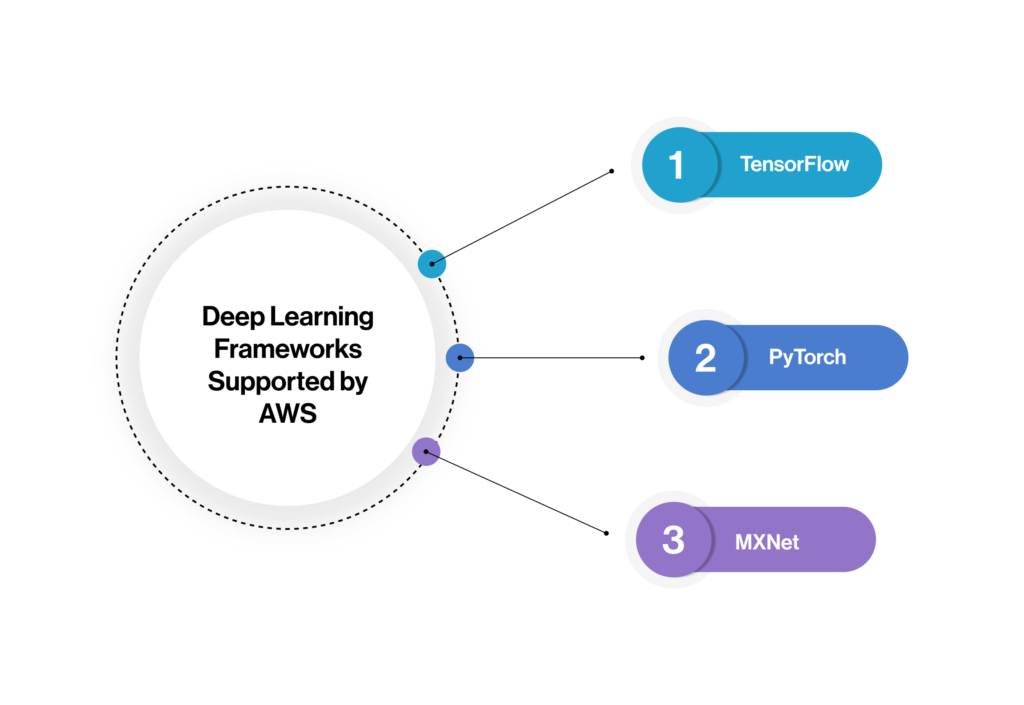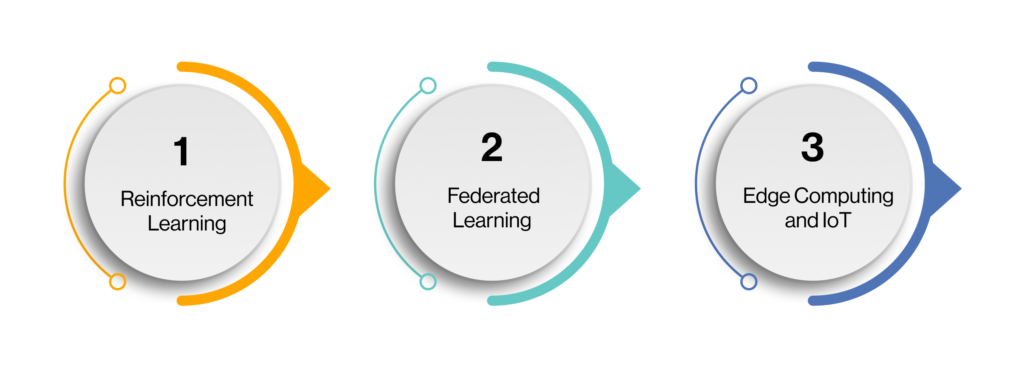
Deep learning has revolutionized the field of artificial intelligence, enabling breakthroughs in areas such as computer vision, natural language processing, and recommendation systems. Amazon Web Services (AWS) plays a pivotal role in advancing deep learning by providing a powerful infrastructure and a suite of services that support popular deep learning frameworks like TensorFlow, PyTorch, and MXNet. In this blog, we will explore the advancements in AWS deep learning, discussing how it optimizes the training and deployment of deep learning models and fosters innovation in AI applications.

Deep Learning Frameworks Supported by AWS
AWS supports several leading deep learning frameworks, allowing developers and researchers to leverage their preferred tools and libraries. Key frameworks include:
1. TensorFlow: TensorFlow is a popular open-source deep learning framework developed by Google. AWS provides seamless integration with TensorFlow, offering scalable training and inference capabilities through services like Amazon SageMaker and Amazon Elastic Inference.
2. PyTorch: PyTorch, developed by Facebook’s AI Research lab, has gained significant popularity due to its dynamic computation graph and ease of use. AWS supports PyTorch, providing infrastructure and services for efficient model training and deployment.
3. MXNet: MXNet is an open-source deep learning framework known for its flexibility and scalability. AWS has played a crucial role in the development of MXNet and continues to provide support for this framework, enabling high-performance deep learning workflows.
Optimizing Deep Learning Models on AWS
1. Distributed Training: Training large deep learning models can be computationally intensive and time-consuming. AWS offers distributed training capabilities, allowing users to distribute their training workloads across multiple instances, reducing training time and increasing efficiency. This is achieved through services like Amazon SageMaker’s distributed training feature and the AWS Deep Learning AMIs (Amazon Machine Images).
2. Model Optimization: AWS provides tools and services for optimizing deep learning models to achieve higher performance and reduce resource consumption. For example, Amazon Elastic Inference allows users to attach low-cost GPU-powered inference acceleration to Amazon EC2 instances, optimizing the deployment of deep learning models.
3. Integration with AWS Services: AWS facilitates the integration of deep learning models with other services in its ecosystem. For instance, models trained using deep learning frameworks can be seamlessly deployed on Amazon SageMaker, and inference results can be stored in Amazon S3 for further analysis. AWS Lambda can be used to run serverless functions that invoke deep learning models, enabling real-time and scalable inference.
Advancements in Deep Learning Applications
1. Generative Models: AWS enables the training and deployment of generative models, such as generative adversarial networks (GANs) and variational autoencoders (VAEs). These models are capable of generating realistic images, text, and other synthetic data, opening up possibilities in areas like content generation, data augmentation, and simulation.
2. Natural Language Processing (NLP): With AWS deep learning services, developers can build advanced NLP applications. Techniques like recurrent neural networks (RNNs), transformers, and attention mechanisms can be used for tasks such as sentiment analysis, language translation, text summarization, and chatbot development.
3. Computer Vision: AWS facilitates the development of computer vision applications by supporting deep learning models for tasks like object detection, image segmentation, and image recognition. This enables businesses to implement visual search, content moderation, and autonomous systems with enhanced accuracy and efficiency.
Emerging Trends and Future Directions
AWS continues to innovate in the field of deep learning, embracing emerging trends and technologies. Some of the areas to watch include:

1. Reinforcement Learning: AWS is exploring reinforcement learning techniques and services, enabling developers to build intelligent agents that can learn and optimize decision-making processes in dynamic environments.
2. Federated Learning: Federated learning, which allows training models on decentralized data sources while preserving privacy, is an emerging research area. AWS is actively investing in federated learning to enable secure and collaborative model training.
3. Edge Computing and IoT: With the proliferation of IoT devices, AWS is focused on bringing deep learning capabilities to the edge. This allows running deep learning models directly on edge devices, reducing latency and enabling real-time inferencing.
Conclusion:
AWS deep learning services provide a powerful platform for researchers and developers to push the boundaries of AI innovation.
With support for popular deep learning frameworks, distributed training capabilities, model optimization, and integration with other AWS services, AWS empowers users to build and deploy advanced deep learning models at scale.
As the field of deep learning continues to evolve, AWS remains at the forefront, driving advancements and facilitating the development of cutting-edge AI applications in areas like generative models, NLP, and computer vision.